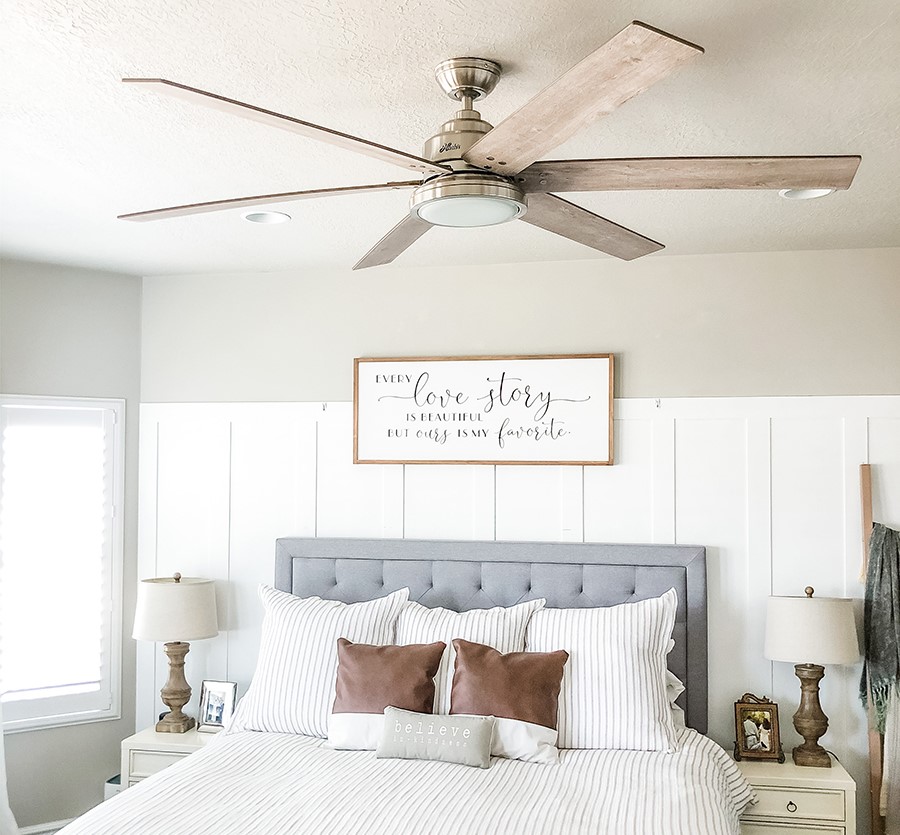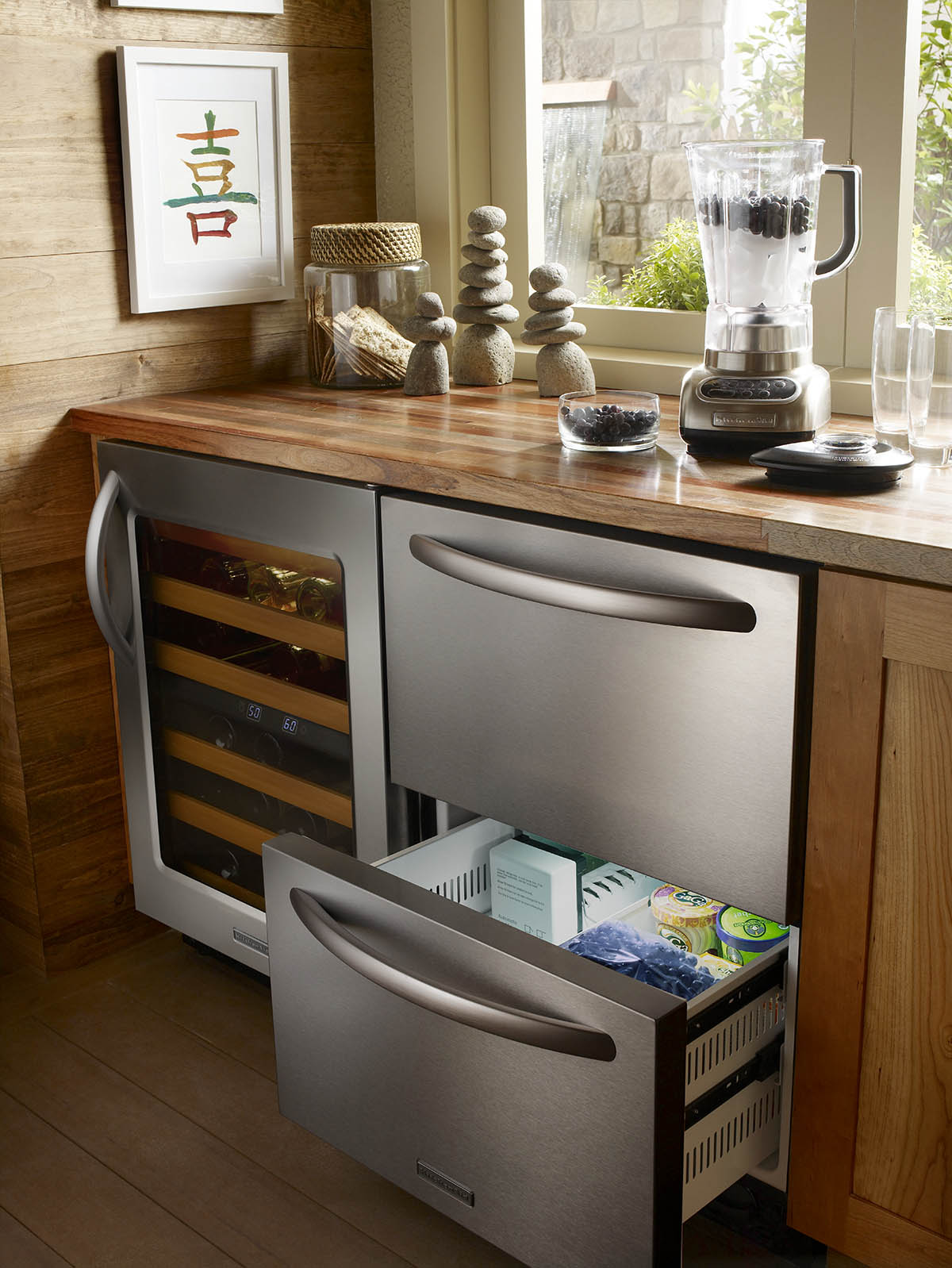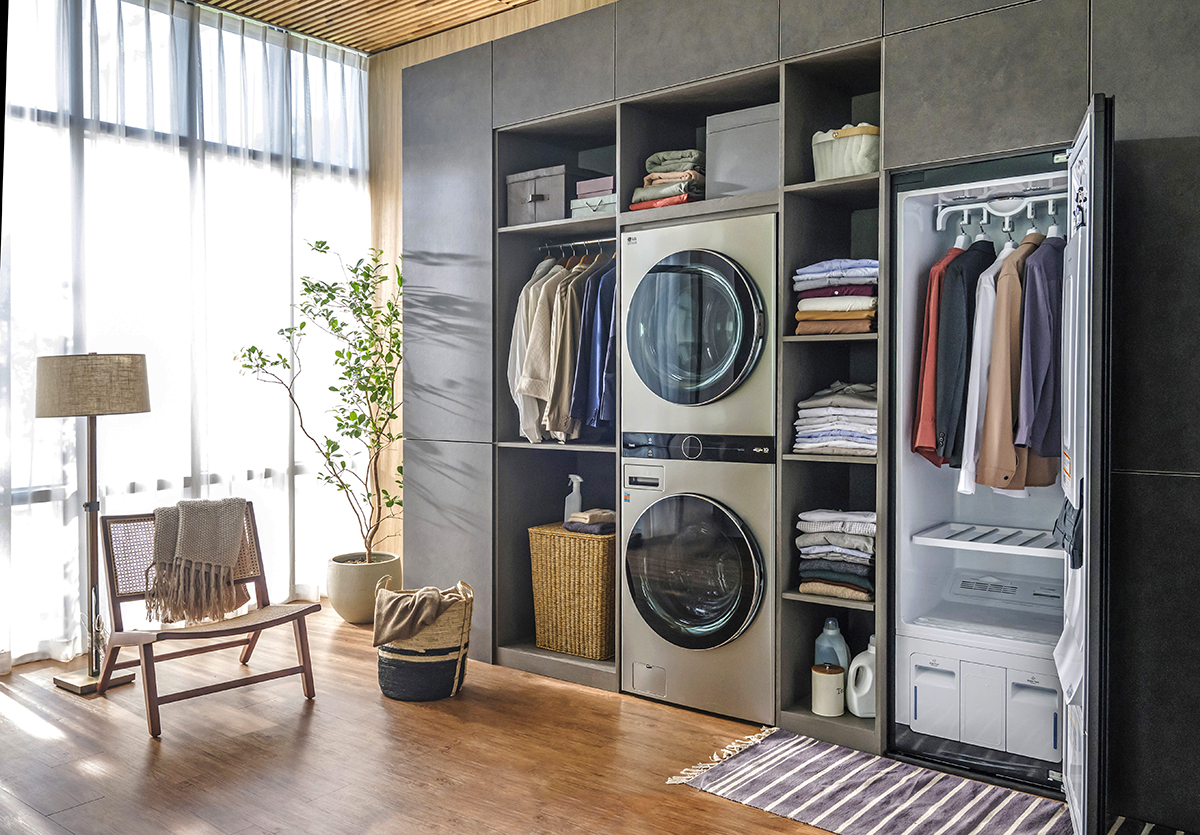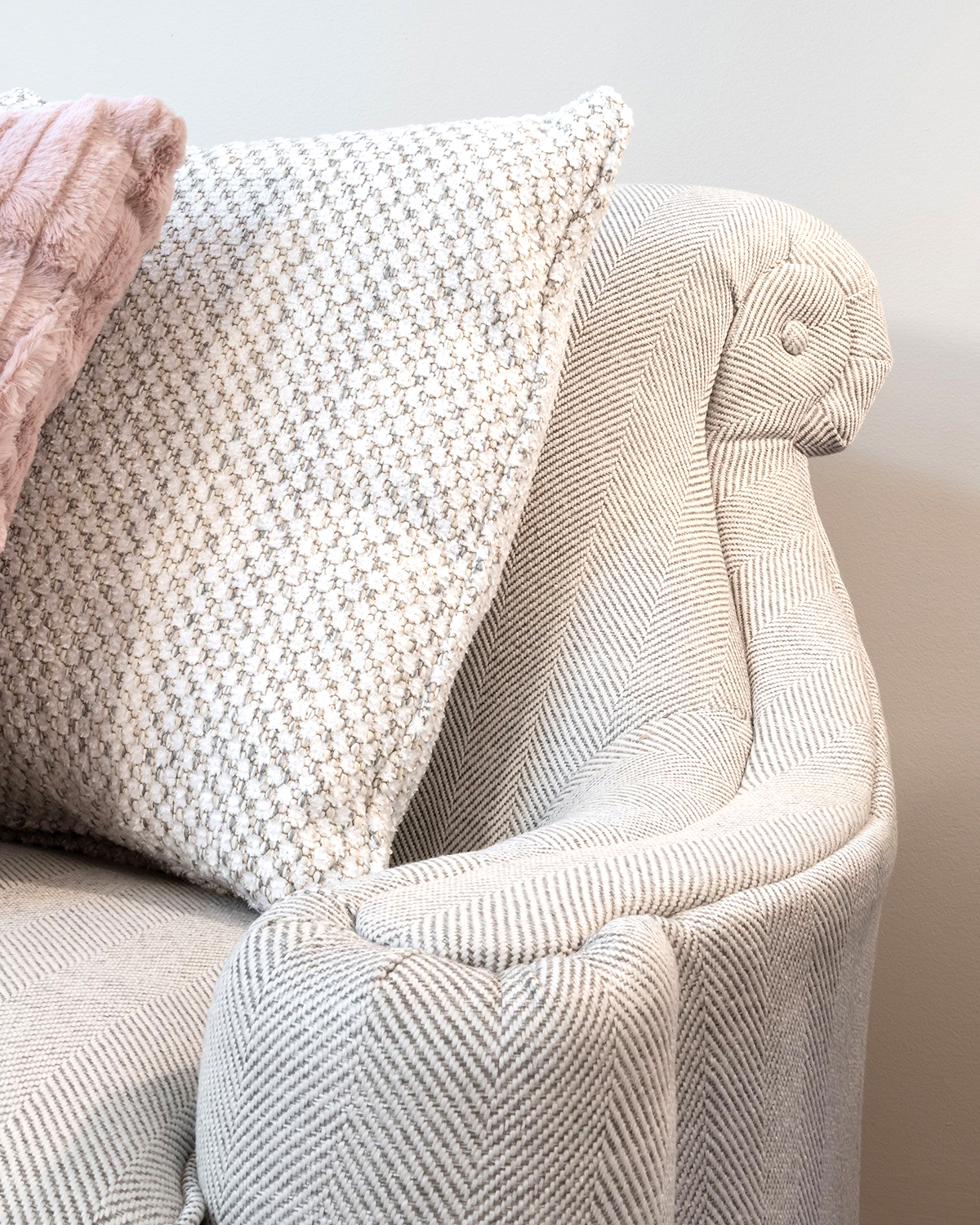WRITER | RYLEE SORRELL
PHOTO | ALL-PHASE PETOSKEY
One of my favorite things about growing up and living in Michigan is having all four seasons. The summers call for backyard barbeques, farmer’s markets, days at the lake, and nights by the campfire. Fall brings cider, donuts, wine tasting, and colors that set the trees ablaze. Winter has always been my favorite; when the snow looks like glitter, the tree is lit, and you have a cup of cocoa to warm your hands. Then, of course, spring that comes back with the sun just when you thought winter would never end. To me, as a lighting designer, the season changes also mean ceiling fans. In my opinion, they are one of the more under-utilized fixtures in a home. Here’s a look at where to use them, how to size them, what to look for when buying them, and how to use them efficiently for every season.
Let’s start with the basics of ceiling fans. The number one thing you need to know about ceiling fans is that they cool people, not rooms! The fan circulates the air in a room, causing the wind chill effect by displacing hot air and allowing cool air to take its place. When the air moves past the moisture on your skin on a hot summer day, it can make you feel up to 10 degrees cooler. For this reason, the most common spaces for a fan are the ones occupied the most.
Next, you need to know how to choose the correct size for those spaces. Sizing is everything with fans; going too small won’t allow the circulation to reach to the edges of the room. This is a problem, as most seating in a space will be around the perimeter, and the small fan will leave those spots stuffy and stale.
Sizing recommendations are as follows:
| Room Size: 70-90 square feet | Fan Size: 42-44 Inches |
| Room Size: 100-150 square feet | Fan Size: 52-54 Inches |
| Room Size: Over 160 square feet | Fan Size: 60+ Inches |
Experts suggest that the bottom of the fan be no less than 7 feet to the floor for safety and no more than 10 feet for optimal airflow. The fan should not overlap any can lights as the fan blades will interfere with the light shed.
Consumers frequently wonder if a three-blade fan or a five-blade fan is more effective. Airflow is not determined by the number of blades, but by the blades’ pitch or angle. The more angled blade will produce more air.
Fan companies use cubic feet per minute (CFM) to measure airflow. A 52-inch fan should have at least 4,000 CFM on high, and a 60-inch fan should have 6,000 CFM on high. After you make sure all those boxes are checked, choose a fan that adds to your décor.
Design-wise, a three-blade fan can be a great way to modernize a space, and a light kit can add another layer of light to a room!
Many ceiling fans have a reverse function, which is great in colder months. When switched to reverse, or clockwise, the fan creates an updraft that pushes the warm air from the ceiling down to the floor, letting you keep the thermostat a few degrees lower. In the hotter months, switch your fan to default, or counter-clockwise, at any speed to create that wind chill effect. Using a fan instead of your air conditioner in the summer will help keep your energy bills lower. Turn your fan off when leaving a room for even more savings.
No matter the season in Michigan, ceiling fans are a great way to add style or a new layer of light to any space.








